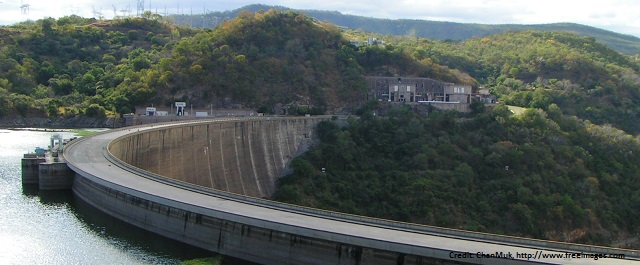ECA launches plan to develop special hydropower tool

Addis Ababa, Ethiopia, May 11, 2017 (ECA) – The Economic Commission for Africa is teaming-up with the International Hydropower Association (IHA) to develop a tool that can quantify the comprehensive benefits of hydropower schemes on the continent, Soteri Gatera, Chief of Infrastructure and Industrialisation in the ECA’s Regional Integration and Trade Division, said Thursday.
Addressing a session on benefits of hydropower at the on-going World Hydropower Congress in Addis Ababa, Mr. Soteri said the tool will target investors and policymakers to ensure the full value of hydropower projects is realized and the risk-reward profile for developers and investors is improved.
Currently, there is no comprehensive methodology, accepted within the hydropower sector, to quantify the non-power related and macroeconomic benefits of hydropower projects. Forecasting the benefits of various energy and infrastructure options will help ensure that opportunities are not missed, said Mr. Soteri.
“Once developed, this template or methodology will be will be rolled out within the hydropower sector, and testing it against planned and completed projects in various jurisdictions,” he told delegates to the congress, adding hydropower was now the energy of choice of Africa with leaders committing at continental level to prioritise hydropower development as a source of renewable energy.
He said the recent African Union Specialised Technical Committee (STC) on Transport, Transcontinental and Interregional Infrastructure, Energy and Tourism, held in Lomé, Togo, earlier this month, reaffirmed, in its declaration, the important role of hydro as a source of renewable energy in Africa.
“While acknowledging the role of other energy sources, the meeting affirmed that hydropower is the only renewable energy that has the potential to expand access to electricity to large populations, as well as to rural households,” he said.
Mr. Soteri said single and multipurpose hydropower facilities can make substantial contributions at local and regional levels.
In addition to export revenues, they provide other local macro-economic benefits relating to employment, education and recreation and in the process opening up new possibilities for trade, tourism and transport.
The session was used to discuss the methodology that can be used to quantify the benefits of completed and planned hydro projects. Hydropower benefits are often under-reported and companies and project developers struggle to collect, quantify and share information on the benefits of their projects.
“In many policy discourses, the non-power related benefits are often ignored. Yet, these are the benefits that make hydropower more competitive than other type of energy infrastructure, particularly in transforming the economies of many African countries,” Mr. Soteri said.
“There is currently a lot of focus on power related aspects, and rightly so. These include maximum peak load generation; flexible energy storage, contribution to grid stability, reducing dependence on imported fossil fuels, and so forth.”
However, adopting a value chain approach in hydropower development reveals significant non-power or secondary benefits. These include important drivers of the economy like skills development, modernization of agriculture, or agribusiness, said Mr. Soteri.
He said the social benefits of hydropower are immense, for example reducing poverty, and enhancing quality of life in communities they serve.
“Our focus at ECA goes beyond increasing access to electricity in Africa. It is also on how energy infrastructure contributes to the economic transformation of the continent,” said Mr. Soteri, adding green power presents the opportunity for Africa to achieve the type of structural transformation that yields sustainable and inclusive growth, creating jobs while safeguarding the productivity of natural resource assets.
Meanwhile, the IHA yesterday launched the G-res, new tool for measuring carbon footprint of reservoirs.
The G-res enables decision-makers and stakeholders to better estimate the greenhouse gas emissions associated with the introduction of a reservoir into a landscape.
Launched by IHA in collaboration with the UNESCO Chair for Global Environmental Change, this publicly-available, web-based tool can be used to measure net greenhouse gas (GHG) emissions on existing or planned reservoirs.
Issued by:
Communications Section
Economic Commission for Africa
PO Box 3001
Addis Ababa
Ethiopia
Tel: +251 11 551 5826
E-mail: ecainfo@uneca.org
- Log in to post comments


